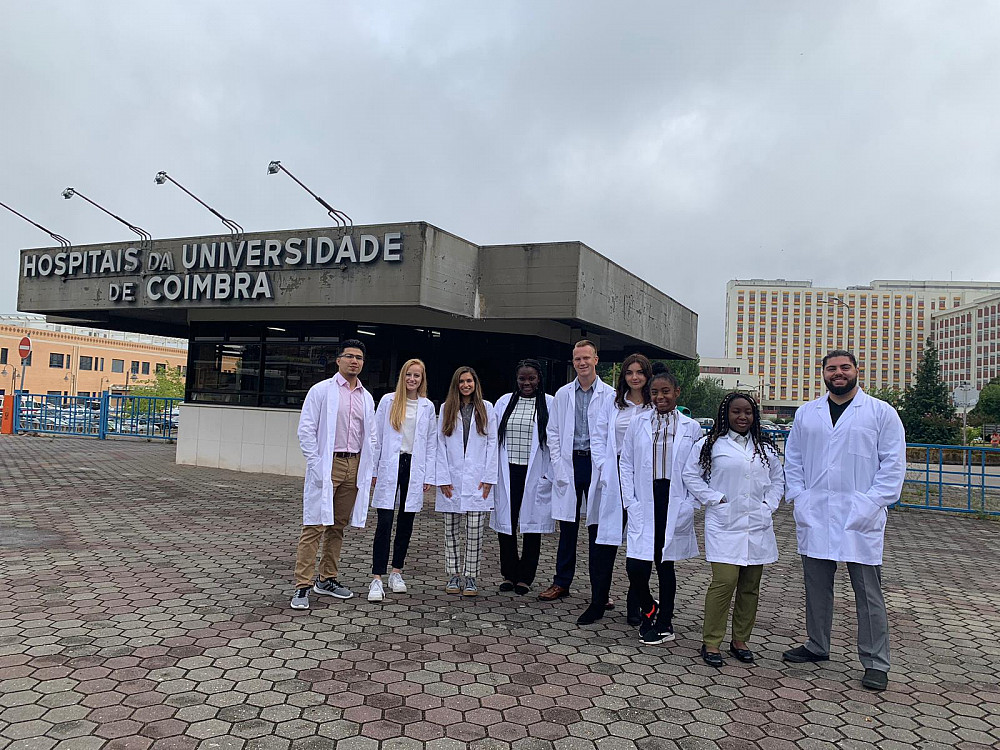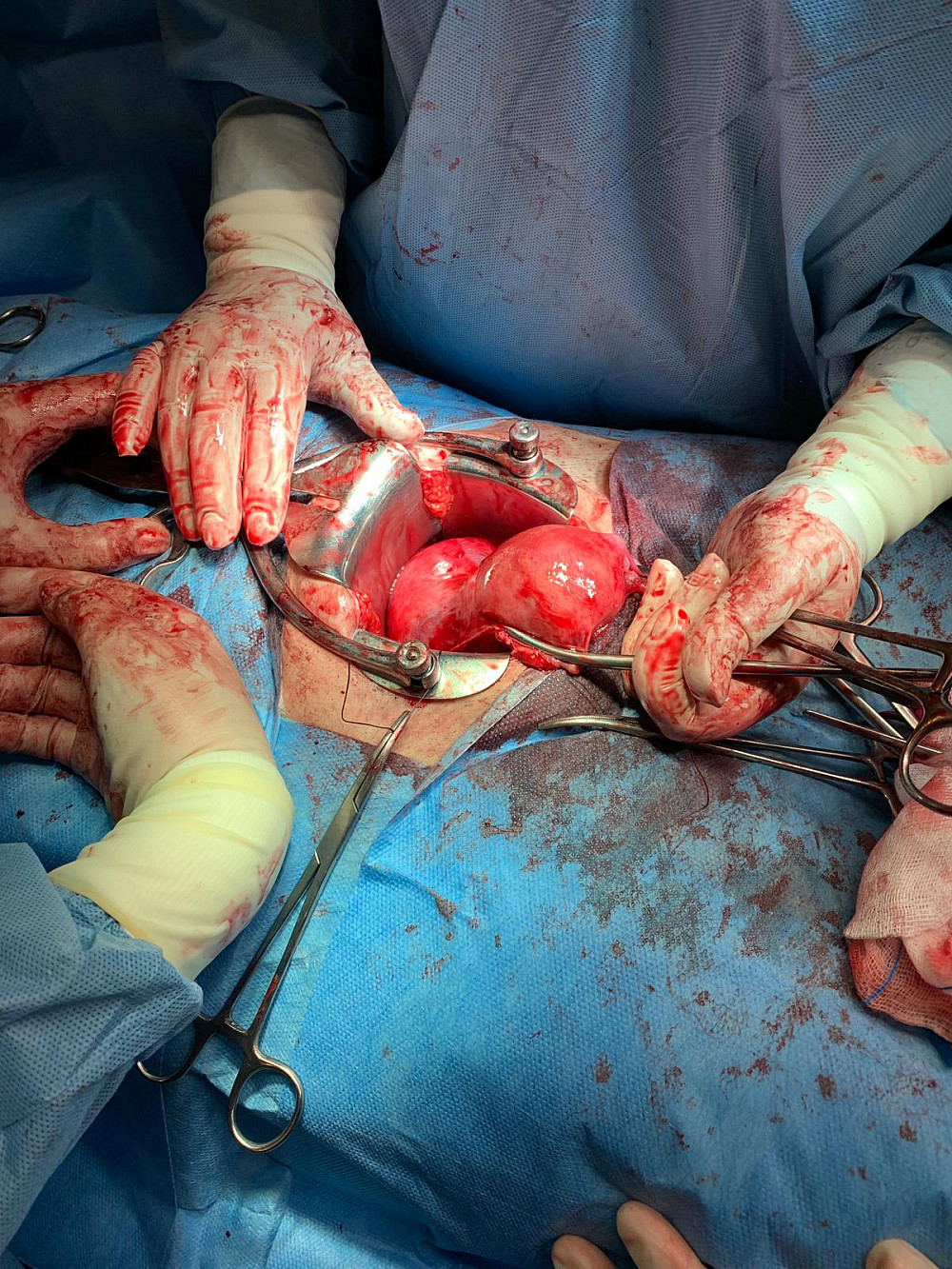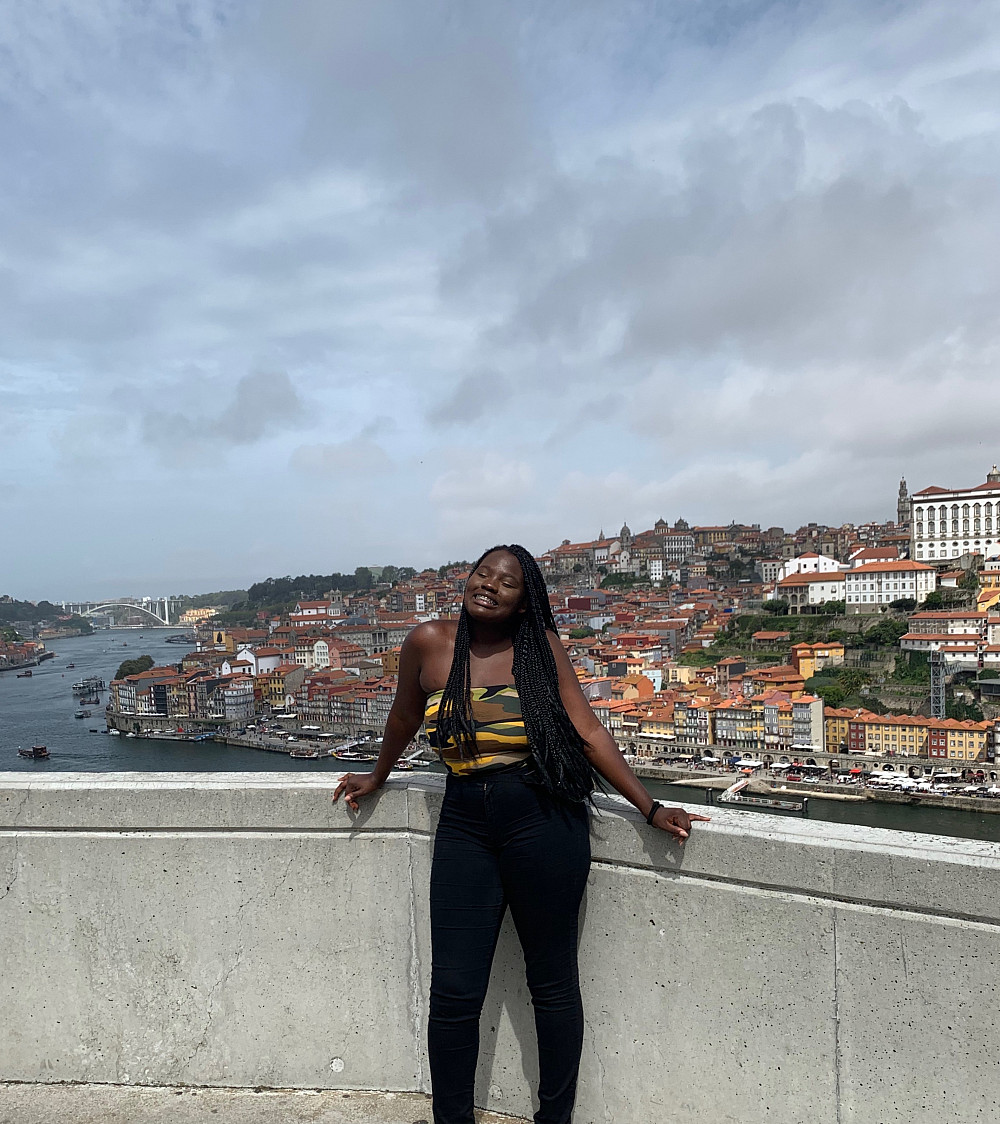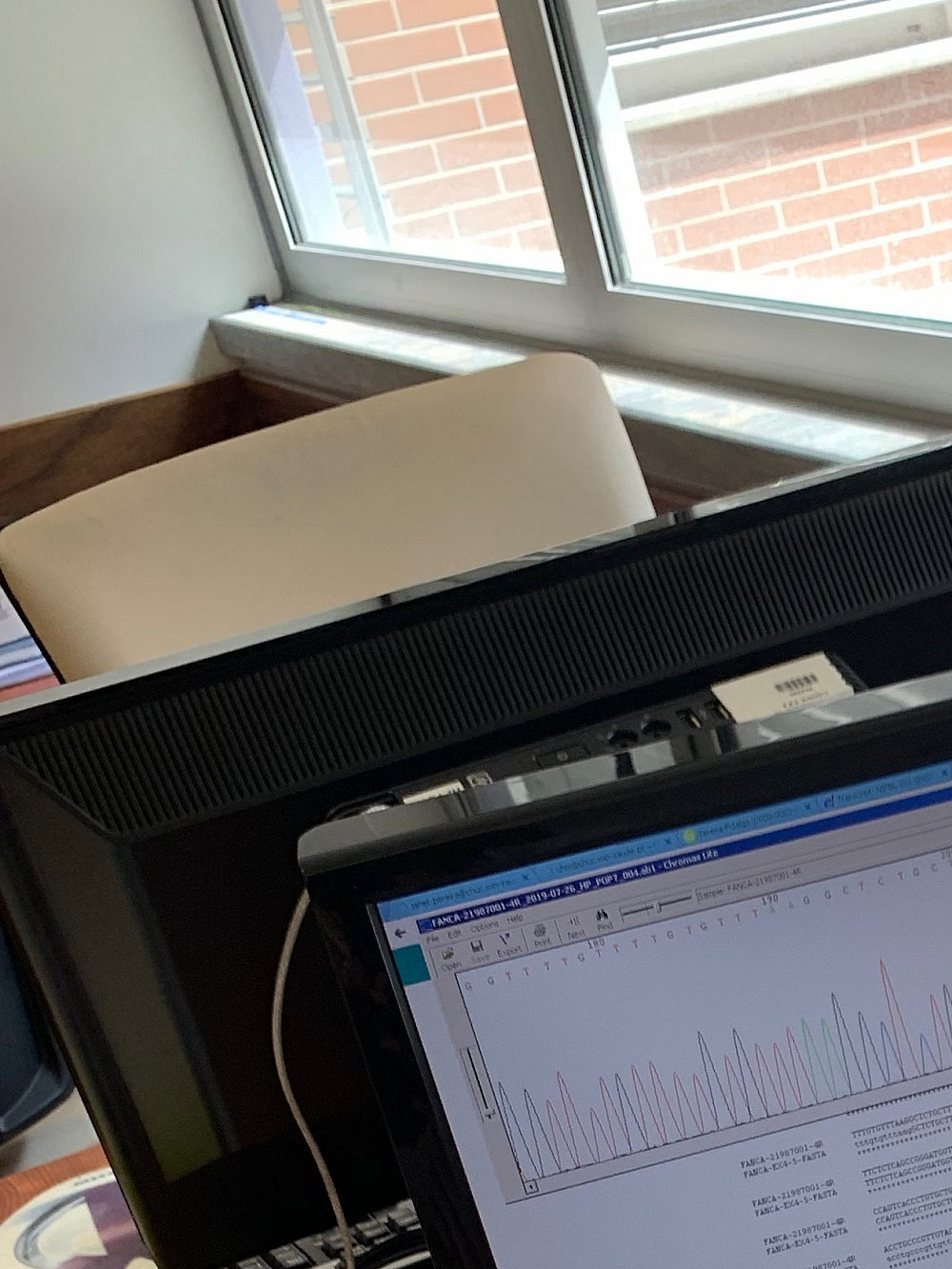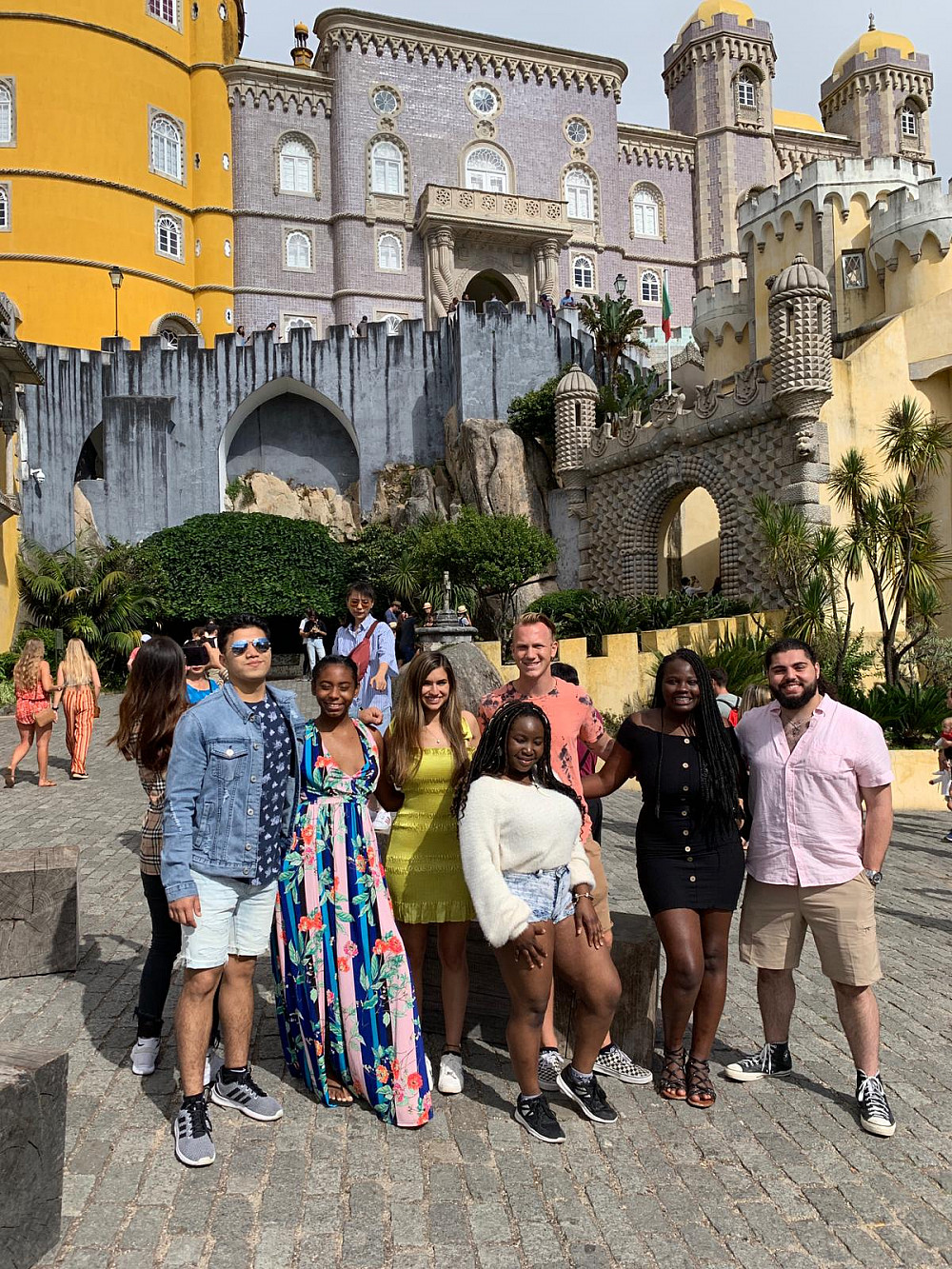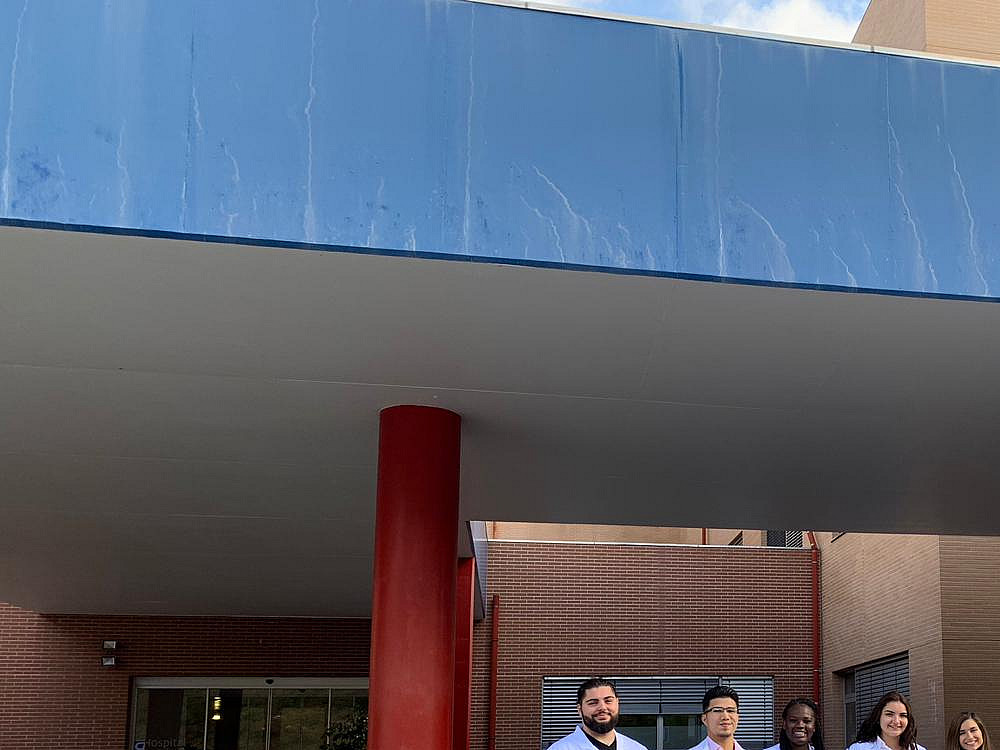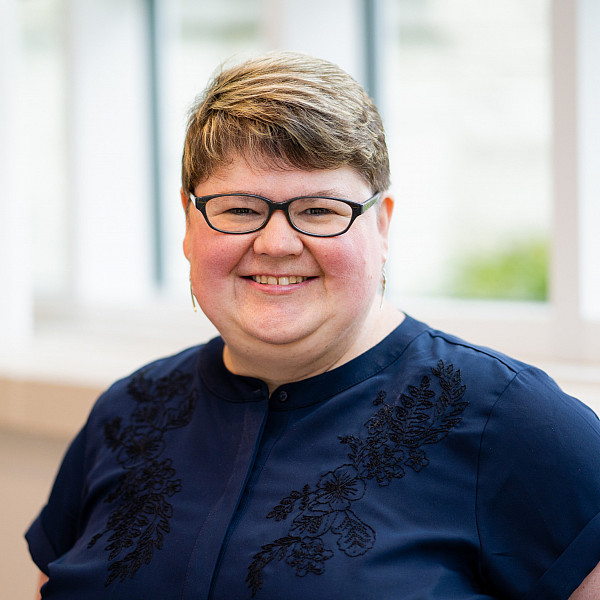News
Becoming a Better Thinker through Science
July 14, 2020
July 14, 2020
Why do so many premed students major in biology? Is it the possibility of working toward better treatments for cancer? Of gaining a more in-depth knowledge of the nine organ systems in the human body? Of mapping the genomes of pandemic-mongering viruses like SARS-CoV-2 virus?
For many premed students, those reasons might apply (although as anyone who’s studied this far-ranging field can tell you, biology encompasses much, much more than medical topics, nor is biology necessarily the only appropriate major for those interested in healthcare careers). But for Southwestern premed student Esther Nyaberi ’21, it was actually mollusks that made the study of biology so appealing.
“There’s a snail lady at Southwestern!” she remembers thinking excitedly during her first year at the university.
Environmental DNA and microplastics
The “snail lady” is Romi Burks, a professor of biology who specializes in aquatic ecology. She focuses on the freshwater invertebrates commonly known as apple snails, so named because they can each grow to the size of an apple. Nyaberi reached out to Burks because she had long been interested in mollusks, and after taking the second half of the introductory course Living Systems with Burks, she wanted to know more about her professor’s research. By the end of her second year, Nyaberi switched her major from biochemistry to biology, and for the past year, she’s enjoyed working with Burks—and snails. It’s a project that began with SCOPE 2019 (Summer Collaborative OPportunities and Experiences, one of Southwestern’s undergraduate research programs) and continued through spring 2020, halting only while the university transitioned to remote learning.
When asked to describe her SCOPE project, which is a collaboration with Kaitlin Galassini ’21 titled “The Case Continues: Still Detecting How eDNA Works to Identify Apple Snails,” Nyaberi has to pause a moment, and you can practically see the neurons firing as she considers how to translate what she knows into accessible lay terms. She begins by defining environmental DNA (eDNA), which is DNA that is shed by organisms through such means as saliva, skin, urine, or feces and that can be found in the environment—think water, ice, snow, soil, and air. For their research, Nyaberi and Galassini collected water samples and ran a process called quantitative polymerase chain reaction, or qPCR, to detect the presence of specific sequences of eDNA that would demonstrate the presence of Pomacea maculata, a species of apple snail, in the aquatic environments from which the students had drawn their samples.
This was work that previous students had done with Burks, though, “so we decided to start off on our own project,” Nyaberi recalls. “We decided to do something on microplastics.”
Microplastics, according to the U.S. National Oceanic and Atmospheric Association, are tiny fragments of plastic less than five millimeters long that are found in oceans and lakes. They derive from larger pieces of plastic debris that have broken apart into tiny pieces, are leached from clothing made from synthetic fabrics while being washed or even just worn, are found in industrial cleaning products, and are added to face washes and toothpastes as exfoliating agents. These miniscule particles eventually end up in our oceans and lakes, posing hazards to aquatic life because they are ingested by marine animals and can inhibit plant growth. “It’s a huge thing in conservation biology, and eDNA is a huge thing in ecology, too, so we thought, ‘Let’s put these two big things together and see what happens,’” Nyaberi recounts.
Nyaberi and Galassini devised an experiment to test whether microplastics increased or decreased the presence of eDNA. They narrowed their focus to microplastics’ effects on the eDNA traces of Pomacea maculata, Nyaberi explains, “because it’s an invasive species.” That is, Pomacea maculata is often confused for Pomacea diffusa, commonly known as the spike-topped apple snail, which is another species of freshwater snail that is often kept in home aquaria as a pet. Unfortunately, when humans tire of caring for their mollusk companions and dump their aquaria into toilets, rivers, lakes, or oceans, organisms such as P. maculata become invasive, reproducing abundantly, introducing parasites and toxins into their new environment, and killing off native plants and animals through consumption or disease. If researchers could use eDNA to identify the presence of P. maculata early, before it becomes destructive, the chances of preventing the species’ impact and spread improve greatly. However, if microplastics inhibit the presence of eDNA, then an invasive species such as P. maculata can multiply and wreak havoc on aquatic ecosystems, going undetected until the widespread damage is already beyond control or repair.
Note from the author: Never let it be thought that Southwestern undergraduates choose easy-to-translate projects. My brain might be bursting, but that’s a tribute to the high caliber of their research.
Nyaberi and Galassini traveled to Houston twice to collect these insidious little creatures (actually, they’re quite large, often growing to 15 centimeters in length); they found none during their first trip, but on their second, they collected 18 snails. The experiment entailed placing half of the snails in tubs with microplastics—they chose acrylic yarn shaved to the length of less than five millimeters—and the other half with no microplastics present. For 36 straight hours, the pair collected, filtered, and labeled samples again and again, getting little sleep during the process. They then began extracting eDNA from their many samples.
The result? “What we’re finding is that there is a significant difference between microplastics and no microplastics,” Nyaberi says. “We’re not 110% sure because we haven’t tested everything, … but we’re beginning to see trends.” The project will begin again once Nyaberi returns in the fall. After all, she declares happily, “Research never ends!”
The snail lady of Southwestern
When asked what it’s like to conduct undergraduate research with her mentor, Esther Nyaberi ’21 answers with honesty and affection. “Working with Dr. Burks is great! She’s a really good research mentor because if you want to go far with your research, she’ll get you there as long as you go to her and ask,” she says. “She definitely pushes me to think differently, for sure.”
“Working with Dr. Burks is great! She’s a really good research mentor because if you want to go far with your research, she’ll get you there as long as you go to her and ask. She definitely pushes me to think differently, for sure.”
One of Burks’s teaching approaches that Nyaberi appreciates most is that her mentor doesn’t do the work for her; instead, when approaching data they’ve helped to collect, new student researchers are asked to try to interpret those data independently before returning to the lab, where Burks will demonstrate the correct method—a process of productive trial, error, and progress that Nyaberi says made her better at analyzing data on her own. “She doesn’t let you drown, but she lets you sink a little,” she describes with a hearty laugh. “That’s what I like about working with Dr. Burks: I don’t want someone to hold my hand, but I also don’t want somebody who’s going to make me not want to work for them, either. She does a good job of that, and she’s human, too—she’s not mean or overdemanding. Her expectations are reasonable.”
Burks has spent her career collaborating with undergraduates and alumni, encouraging them to present at academic conferences and coauthoring published papers. “That’s really cool because your research feels seen; it feels important,” explains Nyaberi. “I’m not going to say that it’s easy; you are definitely in charge of your own research, and your research goes as far as you want it to go.” She and Galassini, for example, presented their work not just at the SCOPE 2019 symposium on campus but also at the Texas Conservation Symposium in January 2020, and they hope to contribute to articles with Burks in a peer-reviewed journal.
How to impress healthcare researchers in Portugal
Two weeks after completing her SCOPE project in summer 2019 and before continuing that research in the fall, Nyaberi was selected to engage in a premedical fellowship at Centro Hospitalar e Universitário de Coimbra (Coimbra Hospital and University Centre, or CHUC for short), one of the largest teaching and research hospitals in Portugal. Under the auspices of Atlantis, an organization that sponsors medical shadowing internships abroad, the then–Southwestern junior spent three weeks rotating between different hospital departments, such as gynecology, oncology, pediatrics, and emergency medicine.
During her rotation in hematology, Nyaberi was scheduled to learn how to run qPCRs and extractions—techniques that had already become second nature thanks to her work with Galassini and Burks back at Southwestern. “It was really cool because I didn’t even need to go to the training; I just went in and did my thing, and I helped my colleagues. It was fun,” she says excitedly.
Two of the physicians were surprised that an undergraduate would know how to apply such procedures. “That’s like the biggest Paideia thing I’ve ever had before: my research was following me!” she adds with a laugh.
“That’s like the biggest Paideia thing I’ve ever had before: my research was following me!”
Advice for younger STEM researchers
The past three years at Southwestern have flown by for Nyaberi, and she admits that working so hard means she’ll need some downtime after graduating next May. She plans to take a gap year or two, working while strengthening her applications to medical school and/or a Ph.D. program. She eventually wants to become a physician, she says, “but I just love research … and I want to teach as well”—no small wonder considering she has fond childhood memories of watching her father, a math professor at Texas State University, in the classroom.
In the meantime, however, Nyaberi hopes that others can learn from her experiences. She suggests that STEM students do their best to keep their grades up despite the rigor of SU courses, but she also advises that “taking care of your mental health is important, too,” in part so that their research in the lab doesn’t suffer from burnout or stress. So in addition to taking a few “mental-health days” when needed, she suggests that fellow students consider “not necessarily the quantity but the quality” of their cocurricular participation. “Don’t join every single club,” she recommends. “I did that my freshman year, but it was like a checklist.” By cutting back on various student organizations and committing only to those she was genuinely passionate about, she says, she was able to give her all to such groups as EBONY, for which she served as secretary. “I really enjoyed my time I was there and really got involved, and you cultivate relationships with people better because [you are] more present.”
She also expresses gratitude for Southwestern’s liberal-arts curriculum, which enabled her to balance STEM courses with nonmajor classes. “It was so cool because it was a break from doing all science, science, science,” she remarks. “If I had homework for Buddhist Traditions, it took my mind away from the science, and it was really interesting.”
But the advice Nyaberi most wants to share is that students should cultivate those all-important relationships with faculty. She says that many of her professors, such as Burks, Martín Gonzalez, and Ben Pierce, have opened up opportunities and made her experiences memorable. She recollects that on her first college exam, which took place in the first half of her Living Systems course, she earned a 30%—“and there was a 10-point curve, too, so you do the math!” she adds self-deprecatingly. But she sought out Dr. Gonzalez and was honest about her struggles, wondering why she had done so poorly considering she had done well in AP Biology back in high school. “And he was like, ‘AP Bio is nothing like what I’m about to throw at you at all,’” she laughs. “But being really proactive in talking with [professors] really helps. If I’d taken the second exam without having that encouragement and talk with Dr. Gonzalez, I don’t think I’d be a bio major.”
As she continues her research at SU, Nyaberi says that she really loves her project because, as she puts it, “it addresses many parts of conservation,” raising awareness about humans’ impacts on the environment, the destruction wrought by invasive species, and the ubiquity of microplastics. Her favorite part of the research process itself is the bench work, including “tactile, practical things” such as completing qPCRs, running extractions, dissecting snails, and examining the contents of their stomachs for microplastics. Her preference for bench work contrasts that expressed by many of her classmates, who find analysis and interpretation more rewarding. She believes the toughest part is scrutinizing the data and making sense of the numbers, and she shares that she and her lab partner were often discouraged at the beginning of their research: “we were literally failing 70% of the time!” she admits, categorizing a lot of their early data as “unusable.”
Still, productive failure is just the way of science, she acknowledges, so patience and persistence are requirements. And she can attest that a joyous feeling of accomplishment comes not just from a research project being successful but also from knowing she’s grown as a researcher over the years—and, consequently, she adds, “I’ve become an overall better thinker.”
















